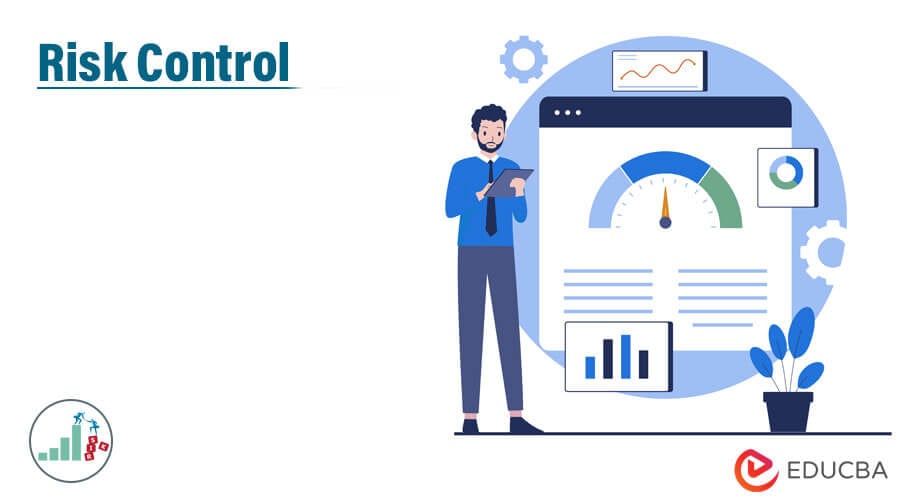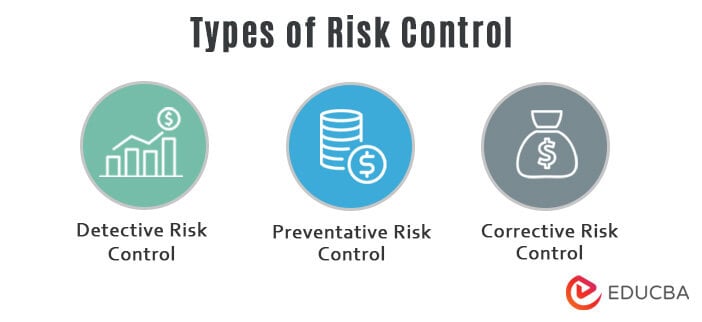Updated July 15, 2023

What is Risk Control?
The term “risk control” refers to the techniques firms use to evaluate potential losses and take action to either partly reduce or eliminate these threats.
This method uses the risk assessment process’s findings, which involves identifying the potential risk factors within a company’s operational setup. These risks can be related to technical & non-technical aspects of the business, fiscal policies, or anything that can adversely impact the company’s well-being.
Explanation of Risk Control
Businesses generally face new challenges every day, which can be due to hurdles, competition, and any other potential risks. Businesses use a methodical approach to identify, assess, and prepare for any such dangers, which can be either physical or symbolic and may affect the firm’s operations and objectives. In this way, the firm can successfully manage business matters to ensure the maximization of the shareholders’ return.
How Does Risk Control Work?
Any risk control method comprises the following step-by-step approach:
- Timely analyze the current business activities to identify any potential risks.
- Take mitigating actions to either reduce or eliminate these risks.
- Re-assess the business activities to ensure the successful implementation of these measures.
Examples
Let us take the example of two companies, company 1 and Company 2, having similar production units in which they manufacture shoes. Company 1 has a proper team for assessing risks and controlling their impact, whereas Company 2 doesn’t have any such team, and it manages the risks as and when they occur.
In 2019, the team of Company 1 informed the management about a possible shortage of raw material in the near term that may disrupt production for a month resulting in a loss of $30 million if not acted upon. On the other hand, company 2 is unaware of this risk. Based on the risk assessment, company 1 created a sufficient stock of raw materials and sailed through the shortage period, while Company 2 incurred losses of up to $25 million. Company 2 wouldn’t have booked such losses without a proper control team, just like Company 1. This example shows the importance of risk control.
Types of Risk Control
There are three major types. They are detective, preventative, and corrective.
- Detective Risk Control: This control measure is implemented only after the detection of the discretionary event. Examples of detective risk control include an internal audit of financial reporting, a review of financial statements, reconciliations of physical inventories, etc.
- Preventative Risk Control: These control measures are implemented to stop a potential risk event from happening. For instance, all financial models have a built-in check for the balance sheet to avoid a mismatch of total assets and total liabilities.
- Corrective Risk Control: These control measures are implemented after the discovery of a problem by detective risk control. The aim is to avoid repeating the same mistake again in the future. Examples of corrective risk control include disciplinary action, software patches, reports filed, etc.
Techniques
Six main techniques can be used. They are avoidance, loss prevention, reduction, separation, duplication, and diversification.
- Avoidance: This control technique uses to avert a risk entirely, and if implemented successfully, there is almost zero chance of incurring losses due to that particular risk.
- Loss Prevention: This control technique doesn’t eliminate the risk but prevents expected losses. In other words, this technique accepts the risk instead of avoiding it completely and then attempts to prevent the losses because of it.
- Loss Reduction: This technique accepts both the risk and the loss that might occur because of it. It simply attempts to minimize the losses in case the risk event occurs.
- Separation: This control technique involves the spreading of key assets. This ensures that not all assets will impact simultaneously if a catastrophic event occurs at one location.
- Duplication: This technique involves the creation of a backup plan. Technology-based firms primarily practice it.
- Diversification: This control technique involves the allocation of available resources across multiple lines of a business. In such a scenario, any calamitous event in one of the business segments doesn’t impact the entire firm’s operation.
How Does Risk Control Help the Firm?
If a firm can successfully analyze and control the ill effects of the potential risks, then it can easily sail through any adverse situation that may take place in the future. In effect, by controlling the risks, the firm can limit the losses to a minimum, maximizing returns for the company’s shareholders and adding value to the market share of the firm.
Importance
Every business operates in an environment that comprises various types of risks. Some risks may avoid, while others have to accept and control to abate their impact on the business. Timely analysis of potential risks and implementation of adequate measures to mitigate such risks can help an organization achieve its business objectives and goals, which provides the ability to sustain in the event of any such risk and indirectly add to its market value. As such, most big and reputed organizations across the globe have an established team for analyzing and controlling such business risks.
Conclusion
Risk control measures play a vital role in the success of a business firm, enabling it to achieve its business objectives and goals while effectively managing its business activities according to plan. In other words, it can be stated that proper management of potential business risks is required by businesses at any level in order to attain their objectives.
Recommended Articles
This is a guide to Risk Control. Here we also discuss the introduction and how risk control work. Along with types and examples. You may also have a look at the following articles to learn more –


